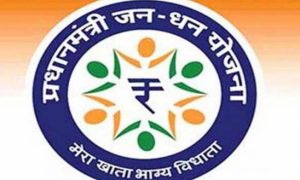Most employees working in the private sector find a portion of their monthly salary going into the Employees Provident Fund (EPF) Scheme. Each employee is given a provident fund (PF) number by the employer but there is supposed to be one single universal account number (UAN) for every employee.
How much goes into the PF account, what is the interest rate on the PF account balance, how to transfer the EPF balance on changing jobs or how to withdraw the PF corpus is something most employees want to know.
7 important things to know about provident fund
1. Provident fund (PF) number
As an employee of any organisation, one gets a provident fund (PF) number. For an un-exempted organisation, managed by EPFO, the PF number is an alphanumeric one representing the state, regional office, establishment, and the PF member code. In case of an exempted organisation, where the PF is managed by a trust, the PF number is only numeric. PF number is not unique and changes every time an employee changes organisation.
2. Universal account number (UAN)
Unlike the PF account number, the universal account number (UAN) is a unique number allotted to every employee. An employee is supposed to hold one single UAN, no matter how many organisations he or she works in. Every time an employee changes organisation, the 12-digit UAN remains the same. The employee’s PF number gets linked to the UAN and helps in managing PF issues such as transfer or withdrawal of PF better. For PF UAN number balance check, one will have to use them to get the balance in their provident fund account. One may go for UAN PF login to find out the balance.
3. EPFO member
As an employee who is contributing towards his or her EPF account, the EPFO considers him a ‘member’. As per the EPF rules, any member i.e. an employee whose monthly pay is below Rs 15,000 is a member of the EPF scheme and falls under the purview of the EPFO. Members with higher pay may also join the scheme.
4. PF Contributions
Employee’s contribution: Currently, the mandatory monthly contribution by the employee stands at 12 per cent of the monthly pay which includes monthly basic pay, dearness allowance and retaining allowance, if any. As an employee, one is allowed to enhance the contribution to up to 100 per cent of the basic pay. Such contribution above the mandatory 12 per cent is considered as a voluntary provident fund (VPF). The contributions towards VPF may be modified annually by the employe.
Employer’s contribution: An employer has to match the employee’s contribution of 12 per cent of employees basic pay, however, the employer is not obliged to match employee’s higher contribution towards VPF. However, the entire amount of the employer’s contribution does not go into the employee’s PF account. Out of employer’s contribution of 12 per cent, 8.33 per cent ( of a maximum of Rs 15,000) goes into the employee’s pension scheme (EPS), i.e. Rs 1250 every month, while the balance goes towards EPF.
5. Interest rate on PF balance
The interest rate on PF balance is declared by the central board of trustees of the EPFO and notified by the government each year. The calculation of interest is on the basis of monthly running balance in the employee’s PF account. The interest earned on the employee’s and the employer’s contributions is credited to the PF account once a year. The interest earned is calculated on the monthly running balances in the account. The PF interest rate 2019-20 is 8.5 per cent, while for 2018-19 it was declared at 8.65 per cent up from 8.55 per cent for the FY 2017-18.
6. Employee pass book
The employer is supposed to share the EPF statement with the employees within six months from the end of the FY. Such a statement carries a break-up of employee and employer contribution, interest earned on both balances, contribution towards EPS and other details. The facility to view the Member EPFO Passbook is available to employees or members registered on the Unified Member Portal.
7. Basic Pay of PF members
For the purpose of determining the cut-off amount of Rs 15,000, ‘Basic Pay’ in this case includes basic wages ( salary) with dearness allowance, retaining allowance (if any), and cash value of food concession, if any. Essentially, ‘Basic pay’ means all emoluments which are earned by an employee while on duty or on leave or on holiday with wages in either case in accordance with the terms of the contract of employment and which are paid or payable in cash to him.
The below-mentioned payments in cash are, however, excluded:
(i) the cash of any food concession
(ii) any dearness allowance (that is to say, all cash payments by whatever name called paid to an employee on account of a rise in the cost of living), house rent allowance, overtime allowance, bonus, commission or any other similar allowance, payable to the employee in respect of his employment or of work done in such employment.
(iii) any presents made by the employer.



































